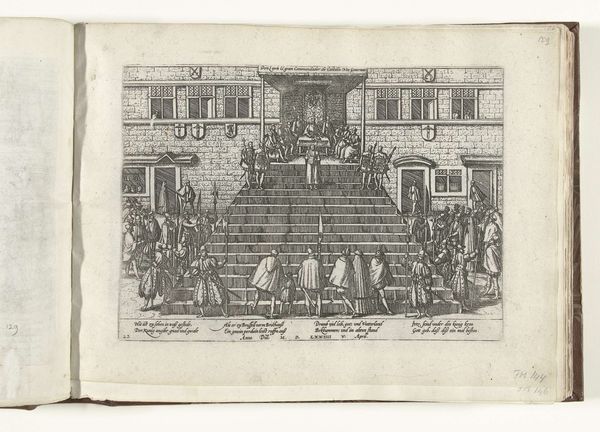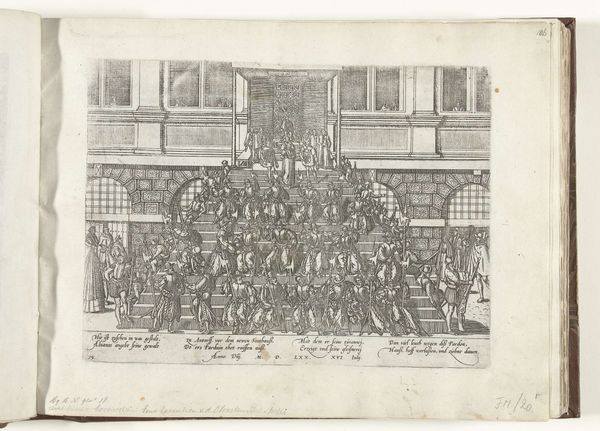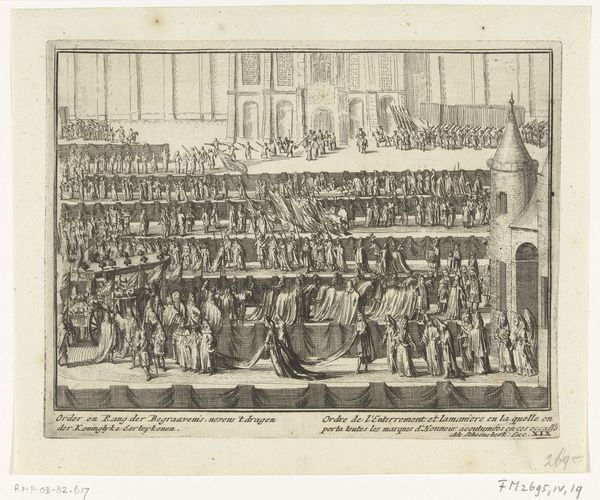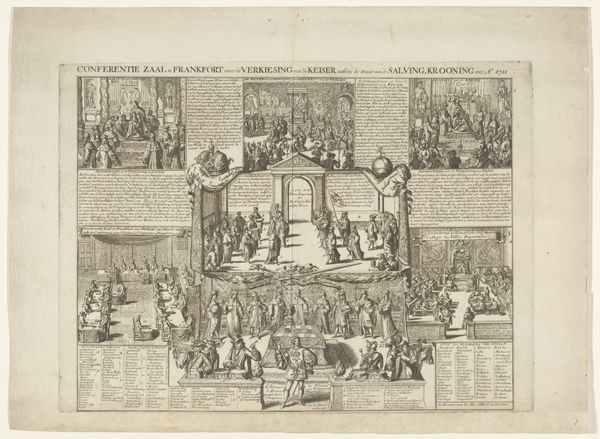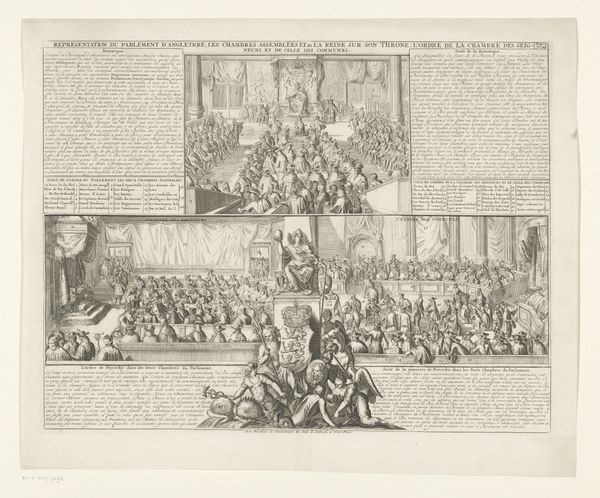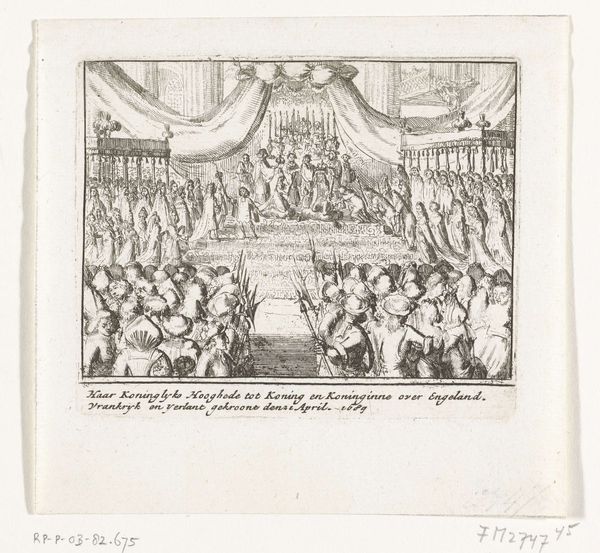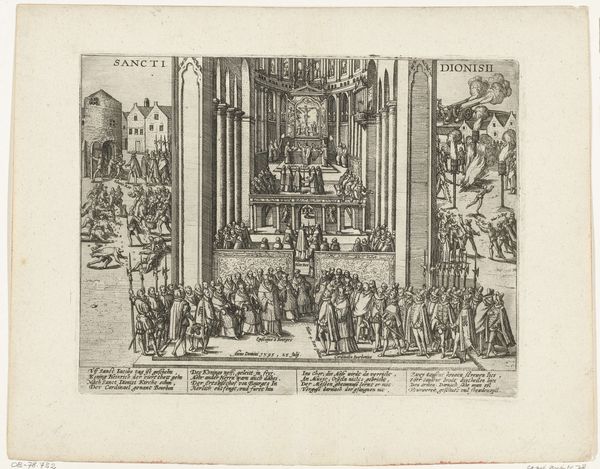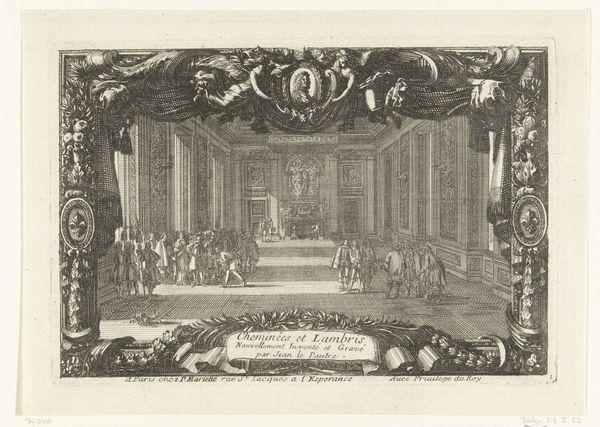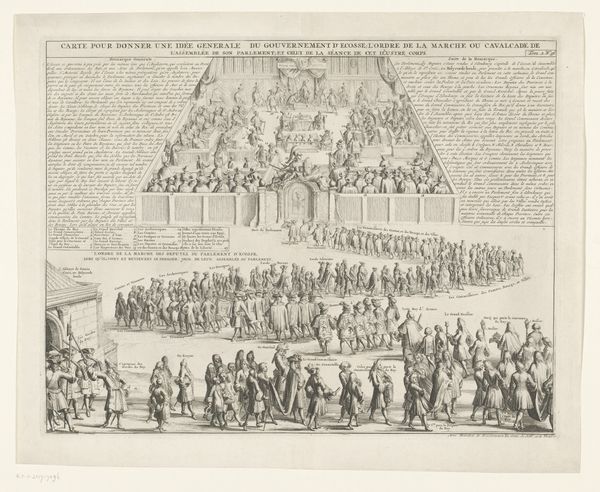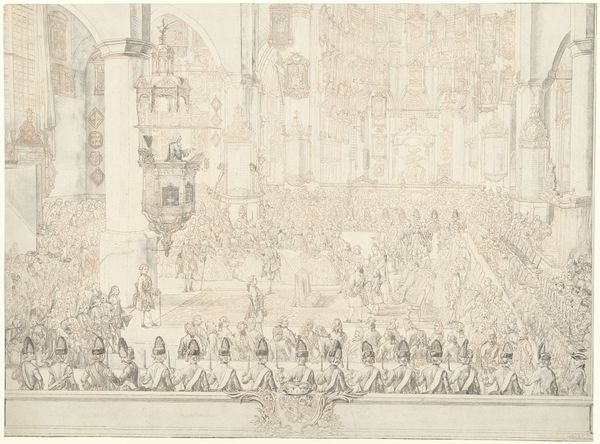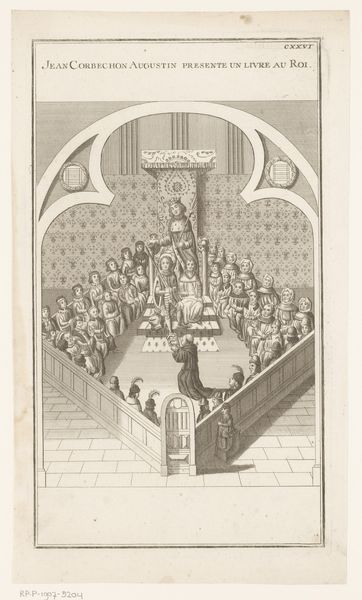
drawing, print, engraving
#
drawing
# print
#
form
#
11_renaissance
#
line
#
history-painting
#
northern-renaissance
#
engraving
Dimensions: height 210 mm, width 280 mm
Copyright: Rijks Museum: Open Domain
Curator: This engraving by Frans Hogenberg, dating from 1570, depicts the "Proclamation of the General Pardon." It's currently held at the Rijksmuseum. Editor: My immediate impression is one of meticulous detail and dense composition. The steep perspective and regimented figures almost create a sense of oppressive order, despite the implied act of forgiveness. It also really clearly establishes a sense of status and social position in the figures displayed. Curator: Precisely. The image captures a significant political moment—an attempt by the Spanish authorities to pacify the rebellious Dutch population. Consider the symbolic weight of that central architectural setting, likely representing civic power, and the careful positioning of the figures representing various social classes. Hogenberg, like many artists of his time, used printmaking as a means of disseminating political narratives. Editor: It's fascinating to consider how the act of pardon is itself framed as a top-down process. Look at how the engraver used the very material of the print, the incised lines, to delineate power dynamics, from the ruling class figures right down the steps to the citizenry. What are the material limitations and challenges of using this linear style? What type of labor went into this level of replication for it to serve as propaganda? Curator: Absolutely. This form of dissemination was revolutionary, and Hogenberg clearly understood how the relatively reproducible medium of engraving could shape public perception, a powerful tool. But in that same vein, how are these people who the image intends to represent able to access and interpret these visual constructions? Editor: Good point. I am still very interested in what kind of paper this was printed on; paper in this period was so variable in texture and production. Curator: Right. These prints weren't just aesthetic objects, but potent tools in shaping socio-political consciousness and establishing narratives of power and authority. They show us not only a past event, but also how that event was curated and disseminated to a specific audience. Editor: Seeing this work today reminds us of the labor and choices involved in making history tangible. We appreciate not only the subject represented, but also the tangible and conceptual material making its accessibility possible.
Comments
No comments
Be the first to comment and join the conversation on the ultimate creative platform.
